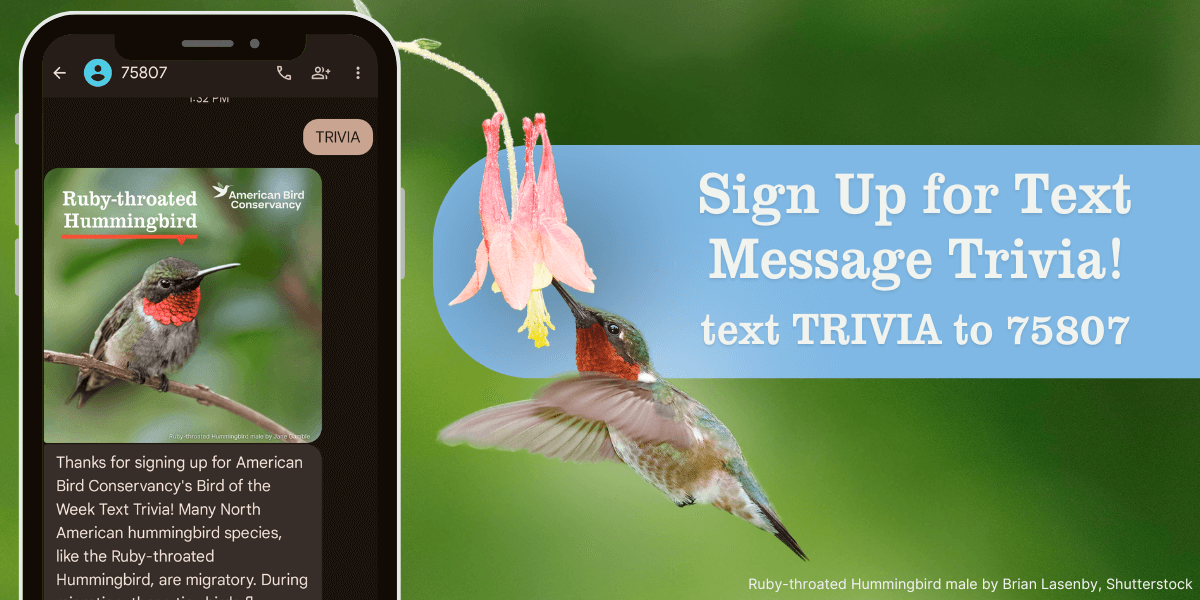Grosbeaks of North America: Five Need-to-Know Species
What is a grosbeak? The key to these birds' identity is in the name. “Grosbeak” (pronounced GROSS-beak) comes from a French phrase that means “large bill,” and grosbeaks can all be recognized by the big, chunky bills they use to crack open and eat seeds.
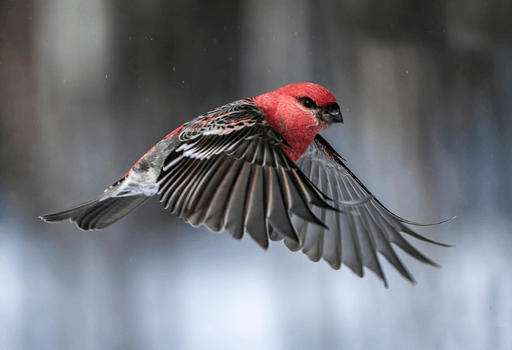
However, birds with “grosbeak” in their name aren't necessarily closely related. Birds from multiple families have evolved oversized beaks as a way of dealing with hard-shelled seeds. Some birds called grosbeaks are in the finch family, some are in the cardinal family, and some may be most closely related to tanagers. Because of this, grosbeaks vary in their habitat preferences and in their migratory behavior.
Grosbeaks also differ in how well their populations are faring. According to estimates from the conservation consortium Partners in Flight, Blue and Black-headed Grosbeak numbers have been gradually rising for decades. Evening Grosbeak populations, on the other hand, have plummeted by 94 percent since 1970, for reasons that are unclear but may include habitat loss and pesticide use.
Our List
The five species of grosbeak profiled below are found in the United States. Four also nest at least in parts of Canada (the Blue Grosbeak being the only exception), three in parts of Mexico, and one (the Blue Grosbeak) as far south as Central America. There are others, the Crimson-collared Grosbeak and Yellow Grosbeak, that have been observed in the U.S. but their visits from Mexico are so infrequent that they aren't typically considered U.S. species.
We hope you enjoy getting to know these big-beaked beauties!
Rose-breasted Grosbeak


The sweet, robin-like song of the Rose-breasted Grosbeak is a common sound in the deciduous and mixed forests of eastern and central North America in spring and summer. When fall arrives, these birds migrate to Central and northern South America, where they spend the winter in open, second-growth woods. Rose-breasted Grosbeaks belong to the cardinal family. Males are unmistakable, patterned in black and white with a triangular splash of bright red on their chests that gives the species its name. Females are marked in much subtler brown streaks, but have a distinctive dark mask and crown. Despite their seed-cracking bills, half of Rose-breasted Grosbeaks' diet during the breeding season is made up of insects, which these birds pluck from tree leaves. A fascinating revelation came in 2022, when ornithologists used DNA sequencing to prove that a strange bird sighted in Pennsylvania was a hybrid between a Rose-breasted Grosbeak and a distantly related Scarlet Tanager. Rose-breasted Grosbeak populations have declined by 30 percent over the last 50 years. Conservationists believe the downturn may be driven by habitat fragmentation, changes in forest maturity, and perhaps by the wild bird trade on the wintering grounds.
Blue Grosbeak

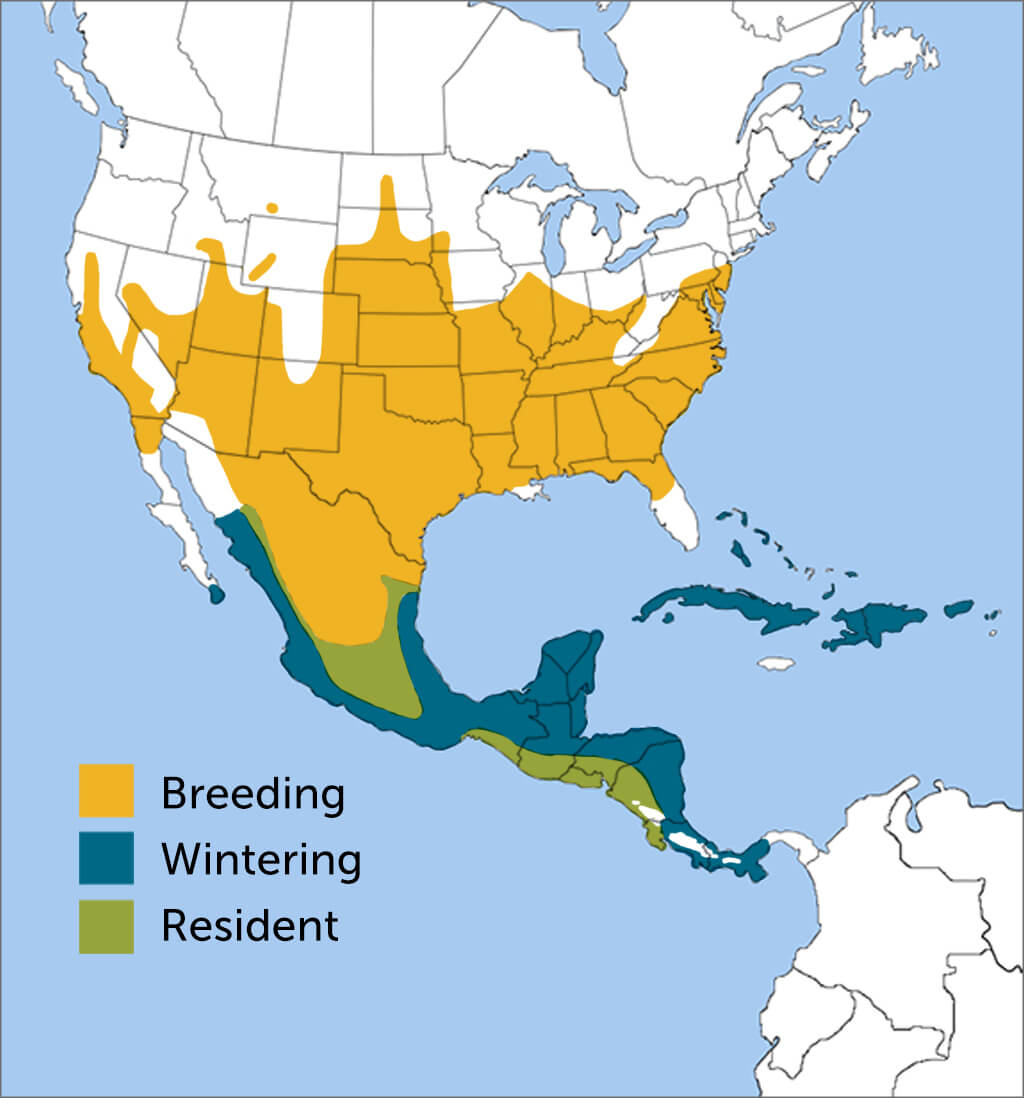
Like the Rose-breasted and Black-headed Grosbeaks, the Blue Grosbeak is in the cardinal family, but its closest cousins within that family are actually birds commonly known to us as buntings, such as the Indigo, Lazuli, and Painted Buntings. Male Blue Grosbeaks are (unsurprisingly) a rich blue color with rust-colored wing bars, and females are tawny brown all over. These birds of fields and forest edges winter primarily in Mexico and Central America. In the U.S., their breeding range was formerly restricted to southern portions of the country. However, since the early 19th century, they have expanded this range as far north as Ohio and New Jersey. A good way to find Blue Grosbeaks is to listen for the males' warbling song, given from exposed perches in treetops and on wires. Opportunistic feeders, Blue Grosbeaks glean waste grain from oat, rice, corn, and alfalfa fields in addition to dining on insects and weed seeds. They form loose foraging flocks in the nonbreeding season. In recent decades, Blue Grosbeak populations have been on the rise. This may be a result of land-use patterns that have led to an increase in abandoned agricultural fields and other open, brushy habitats.
Evening Grosbeak


Unlike Rose-breasted, Black-headed, and Blue Grosbeaks, Evening Grosbeaks belong to the finch family. The earliest descriptions of these birds frequently mentioned sightings at dusk, and ornithologist William Cooper drew inspiration from these observations to give the birds their original Latin name Fringilla vespertina, which means “evening finch.” Male Evening Grosbeaks are yellow with black-and-white wings, dark brown heads and backs, and yellow foreheads. Females are grayish overall, but also have touches of yellow and, like the males, they sport distinctively large whitish bills and black-and-white wings. This species breeds in coniferous forests in Canada's boreal forest belt, the northern edges of some northeastern and north-central U.S. states, and in western mountains, moving south in search of food in occasional winter “irruptions.” Once found only in western North America, the Evening Grosbeak expanded its range into the eastern half of the continent beginning in the late 1800s, perhaps due to the widespread planting of boxelder trees. However, since 1970, the population has plunged by 94 percent, the most dramatic decline of any North American songbird. More study of this species' ecology will be necessary to fully understand the reasons for this dramatic drop.
Black-headed Grosbeak
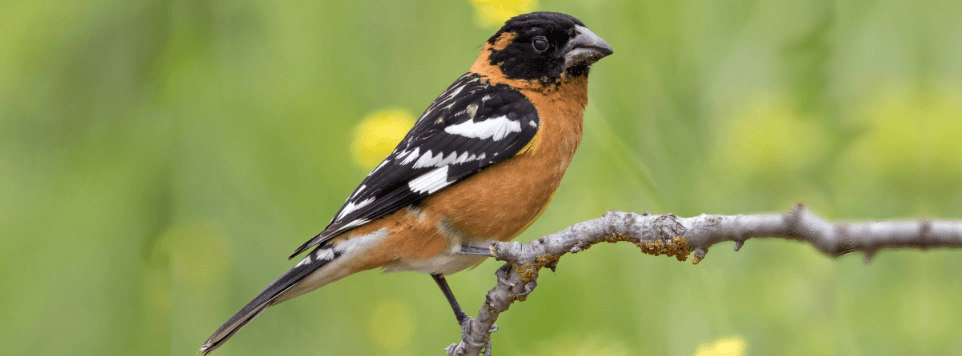

Black-headed Grosbeaks are close relatives of Rose-breasted Grosbeaks, replacing them west of the Great Plains and spending the winters in Mexico. Where they overlap, in the middle of the country, the two species often interbreed. In both species, males and females share parenting duties and both sexes sing. (Black-headed Grosbeaks have a robin-like song very similar to that of Rose-breasted Grosbeaks.) Both species eat large numbers of insects in addition to seeds. Female Black-headed Grosbeaks look similar to female Rose-breasted Grosbeaks, but with a buffier tint to parts of their plumage, and males have a black head and bright orange undersides. Black-headed Grosbeaks thrive in a wide range of nesting habitats, from desert riparian corridors to mountain aspen groves, a trait that has probably helped their numbers hold steady and even increase as many other migratory songbirds, including Rose-breasted Grosbeaks, have declined.
Pine Grosbeak

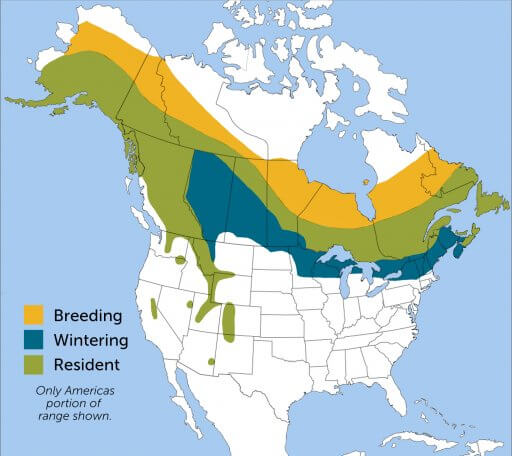
Pine Grosbeaks are big, robin-sized finches found in North America as well as the northern regions of Eurasia. Since these birds often live far from humans, they tend to be rather tame, often allowing observers to approach closely. Males are recognizable by their red heads, backs, breasts, and rumps, and dark wings with white wing bars. Females are similar, but have upper parts that are yellow (or sometimes orangish) instead of red.
This bird's scientific name Pinicola enucleator provides a clue to its habitat and behavior: Pinicola means “pine dweller” and enucleator means “removing the kernel,” a dietary reference. Less omnivorous than the other species on this list, Pine Grosbeaks seek out plant matter most of the year, adding a smattering of bugs when feeding young. Like the Evening Grosbeak, this is a boreal species that travels in flocks and experiences periodic southward irruptions when food is scarce. Despite the remoteness of their range, Pine Grosbeaks are threatened by habitat loss due to climate change and deforestation. Their populations have declined by about 50 percent since 1970.
How You Can Help Grosbeaks
Policies enacted by the U.S. Congress and federal agencies, such as the Natural Resources Conservation Service and U.S. Fish and Wildlife Service, have a huge impact on America's birds, including grosbeaks. You can help shape these rules for the better by urging lawmakers to prioritize birds, bird habitat, and bird-friendly measures. To get started, visit ABC's Action Center.
You can learn more about grosbeaks and other interesting birds by signing up for ABC's Bird of the Week email series.
American Bird Conservancy and our Migratory Bird Joint Venture partners have improved conservation management on more than 8.5 million acres of U.S. bird habitat — an area larger than the state of Maryland — over the last ten years. This is a monumental undertaking, requiring the support of many, and you can help by making a gift today.
